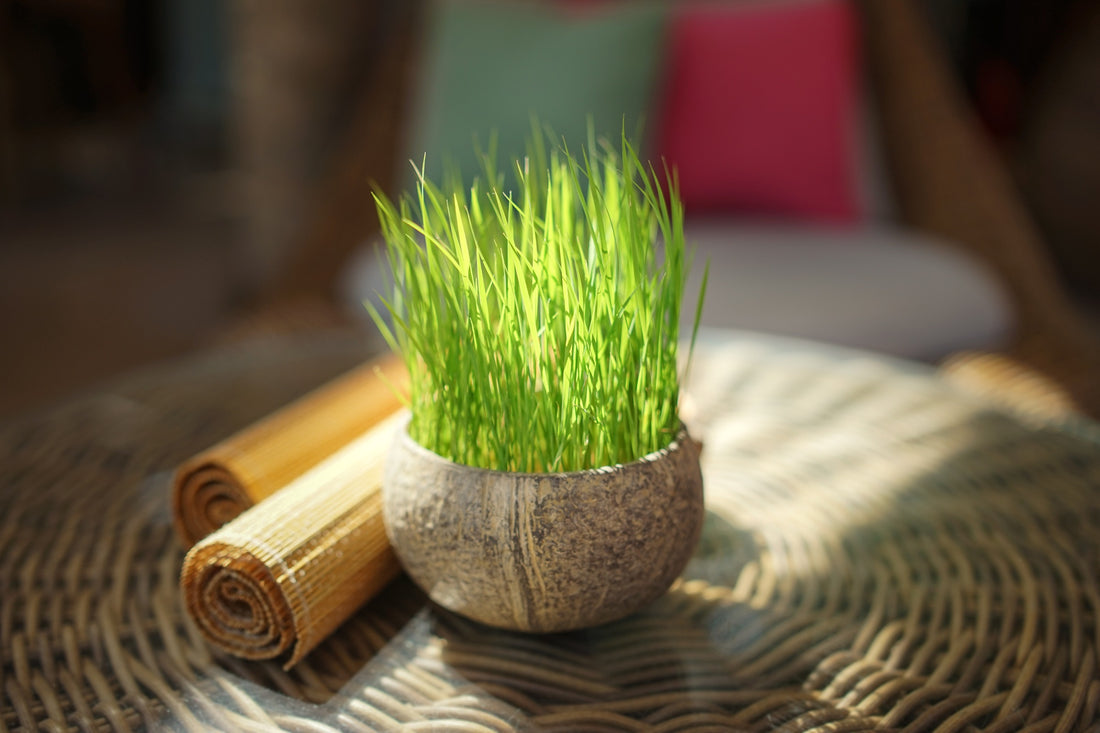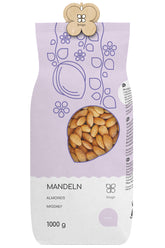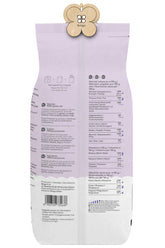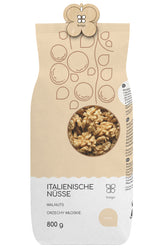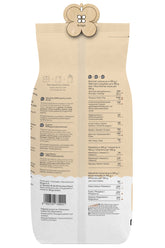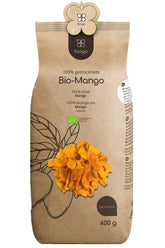Properties and uses of lemongrass
- Health benefits of lemongrass
- The use of lemongrass in the cosmetics industry
- Lemongrass - Use in the kitchen
- Are there any contraindications to using lemongrass?
Lemongrass has become an essential ingredient in Asian cuisine. This readily available spice currently has a wide variety of uses, primarily in the kitchen, but not exclusively. Its health-promoting properties are valued in traditional folk medicine in Asian countries as well as Latin America, and modern research confirms the beneficial effects of this plant on our bodies. It's therefore worthwhile to know its properties and how we can use it in everyday cooking.
Health benefits of lemongrass
The technical name for lemongrass ( Cymbopogon citratus ), like citronella, is lemon grass. It is a plant with long, narrow leaves that is native to Asia and South America, where it is one of the most widely used spices, but can also be grown in greenhouses in Europe. Modern scientific research shows that the most beneficial health-promoting substances are found in lemongrass essential oil. Lemongrass is used for medicinal, culinary, and cosmetic purposes. It is the source of:
- Vitamins A and C,
- Thiamin, riboflavin, niacin, vitamin B6 and folic acid,
- Minerals - calcium, magnesium, phosphorus, potassium, iron, zinc and sodium,
- fatty acids,
- bioactive ingredients - polyphenols,
- fat-soluble compounds,
- Lemongrass oil, which contains nerol, zither, myrcene, geraniol and alpha-terpineol.
The compounds found in lemongrass help neutralize the damaging effects of free radicals, which contributes to slowing the aging process and reducing the risk of lifestyle diseases. The substances contained in lemongrass oil give this plant an antidepressant effect, as well as improving concentration and memory. They inhibit the proliferation of fungi and bacteria, and have disinfectant, anti-inflammatory, and antioxidant properties. Among other things, lemongrass has an effect on:
- By lowering glucose and cholesterol levels, it is especially recommended for people suffering from type II diabetes,
- the smooth functioning of the digestive system, helps with indigestion, abdominal pain, nausea, flatulence or constipation and also stimulates the appetite,
- the work of the immune system, has antibacterial, antispasmodic and cough suppressant properties, therefore it is recommended to use it in infections, colds and infections of the body,
- Relief of migraine symptoms,
- Improve concentration and memory,
- Nervous system - aqueous lemongrass extract reduces the feeling of anxiety, it is recommended to introduce lemongrass into the diet for the prevention of depression and amnesia.
Lemongrass is especially worth incorporating into your diet when you're feeling the effects of a cold or flu. Its antibacterial, anti-inflammatory, and diaphoretic properties effectively support the fight against infections. It's also diuretic, slightly sedative, and has a beneficial effect on our bones and joints.
The use of lemongrass in the cosmetics industry
Lemongrass oil is used in the production of perfumes and deodorants. Due to its astringent, sebum-reducing, and antibacterial properties, lemongrass is often found in anti-acne cosmetics. Because lemongrass extract improves blood circulation, it is used in the production of cosmetics against cellulite and improves skin firmness. Lemongrass oil , also called limonite oil or citronella oil , is worth including in hair care, especially if we are struggling with dandruff and oily hair . It will help strengthen and nourish the hair bulbs. In addition, it is effective in treating athlete's foot and nail fungus. The oil is also good for aromatherapy and has a relaxing and soothing effect.
Lemongrass - Use in the kitchen
The most popular form of lemongrass in Poland is dried or powdered. Its aroma is a combination of lemon and lime with a hint of ginger. However, it is not acidic. Used as a spice in cooking, it imparts a refreshing, lemony, and unique flavor to dishes. It is also characterized by a pleasant, bold, strongly lemony aroma. This spice is used primarily in Asian cuisine, particularly in Thai and Indian dishes. It is added to soups, curries, salads, rice noodles, poultry, fish, and seafood. It pairs well with galangal, coconut milk, and hot chili. Dried lemongrass can be used to make tea and infusions. Its delicate flavor pairs well with green tea, mint, lavender, or chamomile. Lemongrass can be successfully used in desserts, smoothies, fruit cocktails, lemonades, and other beverages, including alcoholic ones. By including lemongrass in the menu, we add character and a lovely lemon aroma to the dishes we prepare, while supporting the digestive and immune systems.
Are there any contraindications to using lemongrass?
The main contraindication for the use of lemongrass is pregnancy and breastfeeding, as large amounts of palmarosa can contribute to premature birth or low birth weight. Therefore, expectant mothers should avoid dishes, infusions, and drinks containing lemongrass. In other cases, it is a completely safe plant.
THE PUBLISHER'S CHOICE
Almonds 1 kg BIOGO
- £11.00
£13.00- £11.00
- Unit price
- / per
Walnuts 800 g BIOGO
- £8.00
£10.00- £8.00
- Unit price
- / per
Dried organic mango 400 g BIOGO
- £10.00
- £10.00
- Unit price
- / per
Dried White Mulberries 500 g ORGANIC
- £6.00
£7.00- £6.00
- Unit price
- / per
Dried organic figs 800 g BIOGO
- £27.00
- £27.00
- Unit price
- / per
Unpeeled buckwheat groats 1 kg BIOGO
- £3.00
£3.00- £3.00
- Unit price
- / per
Organic coconut flakes 500 g BIOGO
- £9.00
- £9.00
- Unit price
- / per
Organic oat flakes 600 g BIOGO
- £4.00
- £4.00
- Unit price
- / per
Organic cashew nuts 1 kg BIOGO
- £18.00
- £18.00
- Unit price
- / per
Milk thistle seeds 1 kg BIOGO
- £4.00
- £4.00
- Unit price
- / per




















































































































